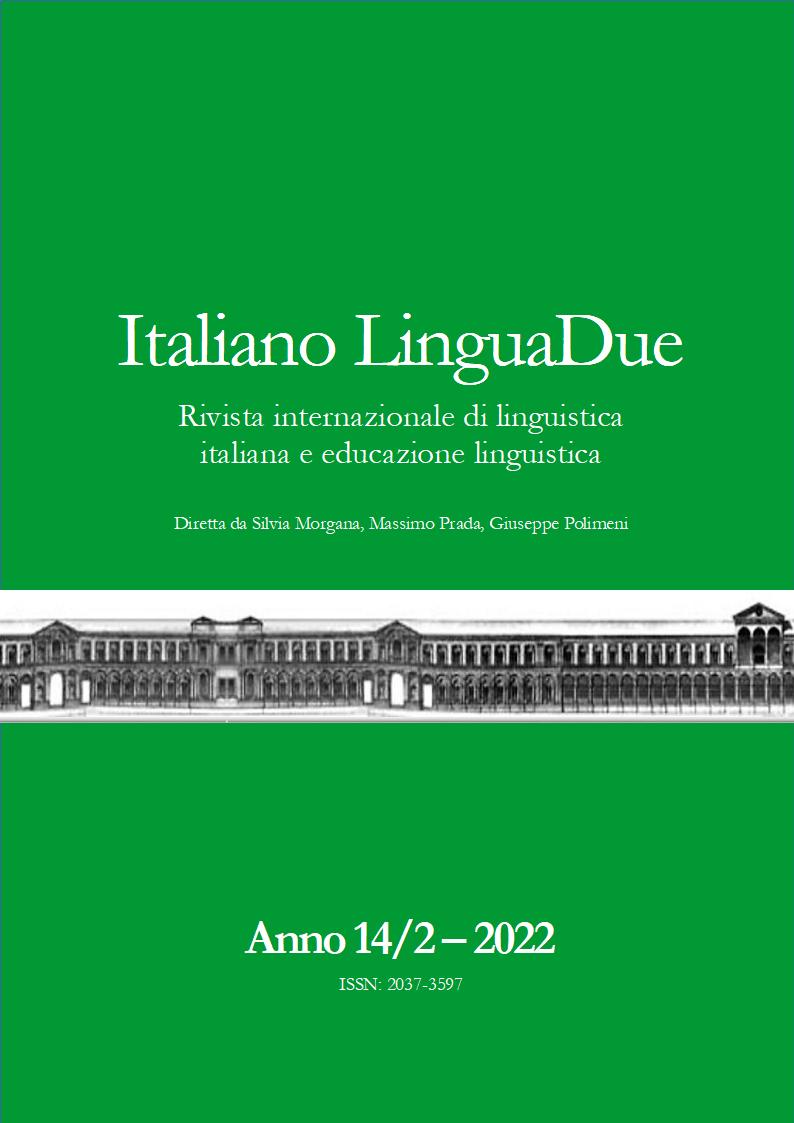INSEGNARE AD APPRENDERE LA SCRITTURA ACCADEMICA IN ITALIANO L2: LA PRATICA DELLA CITAZIONE
DOI:
https://doi.org/10.54103/2037-3597/19621Abstract
La scrittura accademica fa parte di quell’importante competenza che Jim Cummins definisce Cognitive Academic Language Proficiency. A confermare tale importanza sono numerosi lavori di taglio sia teorico che applicativo destinati ad apprendenti d’italiano, ma soprattutto a studenti di madrelingua. Il presente contributo si propone di analizzare la scrittura accademica negli apprendenti sinofoni, con particolare riferimento all’uso della citazione nelle produzioni degli apprendenti cinesi in L1 e L2 e, nello specifico, intende rispondere a tre quesiti di ricerca: 1. in che modo gli apprendenti citano rispettivamente in L1 e L2? 2. Dal momento che le citazioni possono avere funzioni diverse, tali funzioni si differenziano nelle produzioni degli apprendenti? Se sì, come? 3. Quali possibili suggerimenti didattici possono essere tratti per l’insegnamento della scrittura accademica a studenti sinofoni e non?
Teaching academic writing in Italian L2: citation practice
Academic writing is one of the important skills that Jim Cummins defines as Cognitive Academic Language Proficiency. To demonstrate its importance, numerous theoretical and applicative works are intended for learners of Italian, but especially for native speakers. This paper aims to analyze academic writing in Chinese students, with particular focus on the use of citation in the productions of Chinese students in FL and SL, and more specifically, it intends to answer the following three research questions: 1. How do learners cite in FL and SL respectively? 2. Since citations can have different functions, do these functions make a difference in students’ written productions? If yes, how? 3. What possible didactic suggestions can be drawn for teaching academic writing to Chinese and non-Chinese students?




